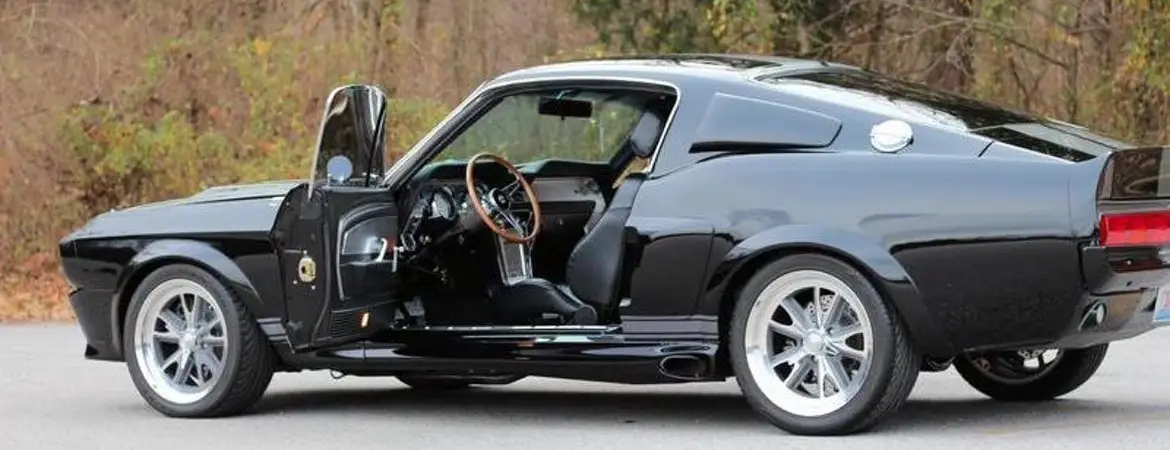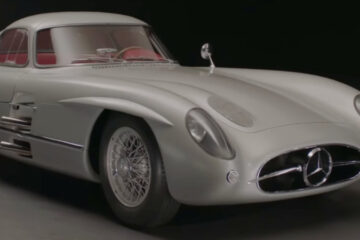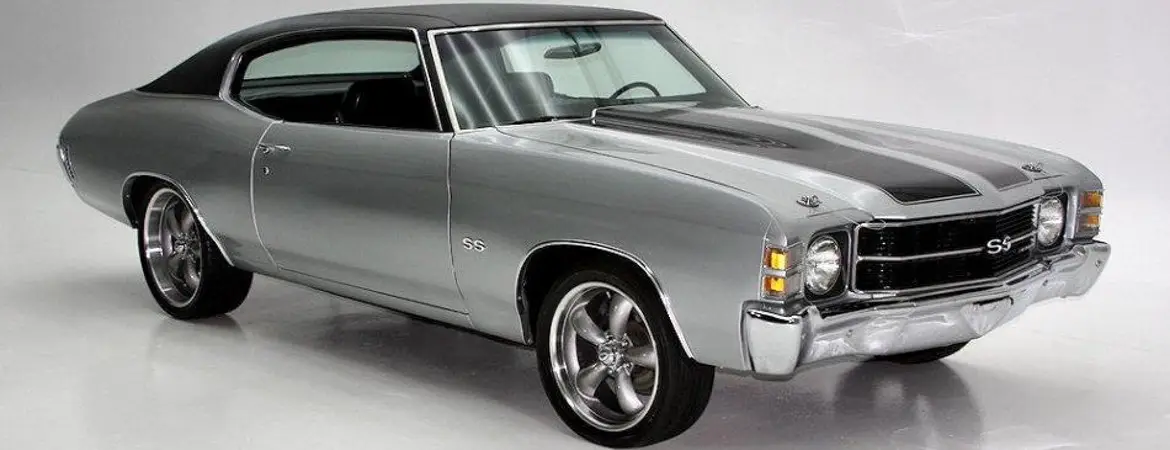
Classic Mustangs & Shelby Mustangs
Ford’s General Manager, Lee Iacocca, commissioned his design team to create a two seat roadster that would compete with European cars as well as the popular Chevy Corvette Sting Ray. Under Iacocco’s guidance, stylist David Ash made the Ford Mustang a smashing success. Check out information on each classic Mustang and classic Shelby Mustang below.
Mustangs
The new Ford Mustang was honored as the Indianapolis pace car in 1964, A special convertible top version was used as the pacer, with an additional 230 built for public consumption. These were available in either convertible and hard top. Ford gave away 195 of the 1964 1/2 hardtop Mustangs in dealer contests. The “64 ½” was technically a 1965 model, but because it was introduced April 17, 1964, it got its 64 ½ moniker. Six months later, a number of major changes were made when Ford launched the “late 1965” Mustang, as they came to be known.
Search for 1964 1/2 Mustangs for Sale
Read more Info about 1964 1/2 Mustangs.
While exact production figures by model and option are not available for the 1965 and 1966 Mustangs, published information indicates Ford sold 5 hardtop Mustangs for every convertible or fastback Mustang. 1965 Mustang fastbacks and convertibles are relatively rare now, and highly collectible for a variety of reasons. Although not wildly popular in 1965, the fastback became the platform for the Shelby GT350.
Muscle cars come in a 2 door, family style package with a V8 engine. These cars are ideal for street use, and also the occasional drag race. The muscle car is quite different from European high performance cars and the Shelby Cobra. While the European cars were designed with agility, the muscle cars were designed to get up and go. Drag races became popular with the help of several successful films including 1957’s Rebel Without A Cause. It wasn’t until the mid 60’s though, that muscle cars began their popular stride. The interest would continue until the 1973 oil crisis and subsequent regulations.
Search for 1965 Mustangs for Sale
Read more Info about 1965 Mustangs.
When you think about a classic Mustang, does a 1966 Mustang Coupe in Candy Apple Red come to mind? Perhaps that’s because Ford sold over 450,000 coupes and 600,000 1966 Mustangs in all. Yes, the 1966 Mustang is the best-selling Mustang of all time!
Search for 1966 Mustangs for Sale
Read more Info about 1966 Mustangs including special edition Mustangs; 1966 Mustang GT, 1966 Mustang High Country Special, 1966 Mustang K Code.
The 1967 Mustang was the first major redesign, and overall, it was a great success. It is widely considered to be an improvement over the previous years. The 1967 Mustang fastback rose in popularity during this time, though the coupe remained the best seller.
Search for 1967 Mustangs for Sale
Read more Info about 1967 Mustangs including the 1967 Mustang GT and the extremely rare 1967 Mustang 289 Hi-Po.
Have you ever seen the Steve McQueen classic film Bullitt? Or maybe you’ve seen it 100 times? Yes, the 1968 Mustang GT is the famous 390 cubic inch “S” code Mustang that Steven McQueen put to the test up against a 1968 Dodge Charger R/T, catapulting the 1968 Mustang fastback to icon status.
Search for 1968 Mustangs for Sale
Read more Info about 1968 Mustangs including special edition mustangs; 1968 Mustang GT, 1968 Mustang GT/CS “California Special”, 1968 Mustang GT/HCS “High Country Special”.
Due to increasing ambitions and more competition, Ford introduced many big block engine options for the 1969 Mustang year, including the 428 CobraJet and Super CobraJet. To this day, the 1969 and 1970 Mustang models are considered to be one of the best muscle cars ever made.
Search for 1969 Mustangs for Sale
Read more Info about 1969 Mustangs including special edition Mustangs; 1969 Mustang GT, 1969 Mustang Mach I, 1969 Mustang Grande’, 1969 Mustang Boss 302, 1969 Mustang Boss 429.
1970 Mustangs were awesome muscle cars, but they were the lowest selling Mustang of the first generation. Mustang sales were cannibalized by an overabundance of muscle car models from nearly every American car manufacturer. While this meant poor sales for Ford in 1970, the rare and well-designed Boss 429 Mustang is the most valuable first generation Mustang in today’s market.
Search for 1970 Mustangs for Sale
Read more Info about 1970 Mustangs including; 1970 Boss 302, 1970 Boss 429, 1970 Mustang Grande’, 1970 Mach I, 1970 T-5, 1970 Twister Special.
On the heels of a sharp decline in Mustang sales, Ford released the 1971 Mustang. The 1971 Mustang was a big change from the 1970 model. It was larger and available with new power trains and creature comfort options. Today, the most popular 1971 model is the Boss 351.
Search for 1971 Mustangs for Sale
Read more Info about 1971 Mustangs including special edition Mustangs; 1971 Mustang Mach I, 1971 Mustang Grande’, 1971 Mustang Boss 351
The 1972 Mustang used the same body style introduced with the 1971 model, but with detuned engines and increased use of emission controls. These larger vehicles drew increased government scrutiny and new environmental regulations. With a looming oil crisis and tougher laws, Ford muscle car enthusiasts were left with higher costs and less power.
Search for 1972 Mustangs for Sale
Read more Info about 1972 Mustangs including special edition Mustangs; 1972 Mustang Mach I, 1972 Mustang Grande’, 1972 Mustang Sprint.
With the 1973 oil crisis and subsequent stock market crash, Ford went back to the drawing table for the 1974 Mustang. After even further power reductions, the 1973 Mustang was the last Ford muscle car, and by comparison, a weak one at that.
Search for 1973 Mustangs for Sale
Read more Info about 1973 Mustangs including special edition Mustangs; 1973 Mustang Mach I, 1973 Mustang Grande’.
Shelby Mustangs
In January of 1965, the Shelby Mustang GT350 made its debut. All 1965 Shelby Mustangs were fastbacks and included a “rear seat delete” option. And all were painted Wimbledon White. The GT350 “R Models” were designed specifically for racing, with a total of 36 built. They are, by any measure, the most collectible of all Shelby Mustangs built.
The ’65 GT350 street version Shelby Mustang ranks second only to the R Model in desirability. While they seem cheap by today’s standards, they were a pricy purchase in 1965. The street version retailed at $4,547, roughly twice the cost of a basic Mustang. Only 516 of the street model Mustang GT350s were built, making them a highly sought after classic car today!
In 1966, they kept the rear seat in place and made the car available in several colors. Hertz Rent-A-Car gave Ford a great surprise when they ordered 1,001 1966 Shelby GT350’s (known as the “GT350H”) The majority were painted Hertz signature black with gold Le Mans stripes, while some were, red with gold, and green with gold stripes. These cars became known as “Rent a Racers” and quickly propelled the popularity of Shelby Mustangs.
Shelby modifications added horsepower to the already powerful “HiPo” 289, solid lifter engine, merging racing and the everyday American driver.
Ford did their first significant Mustang redesign in 1967. Shelby Mustangs incorporated changes by upgrading both looks and horsepower. The Shelby GT350’s were also lowered in price, making them more affordable for the average consumer. As a result, Ford sold twice as many of these as the previous year.
The Shelby GT350 was equipped with a 289 cubic inch HiPo solid lifter engine that was modified to deliver 306 HP. Ford’s massive 428 cubic inch big-block “Police Inteceptor” FE engine, was installed to create the Shelby GT500. 1967 marked the introduction of the GT500, the only Mustang at the time to feature the 427 side-oiler engine.
In recent years the 1967 Shelby Mustang GT500 has gained fame as “Eleanor” the arch nemesis of Nicholas Cage’s character in the 2000 remake of Gone in 60 Seconds.
More 1968 Shelby Mustangs were produced than ever. As in 1964, Ford introduced a mid-year upgrade to their 428 cubic inch engine. The Police Interceptor was discontinued, and in its place, the 428 CobraJet became available. Early 1968 GT500’s featured the Police Interceptor, and later models built as the GT500KR were equipped with the CobraJet engine. For the first time, Shelby made a convertible an option. With a limited production run of only 318, the 1968 Shelby GT500KR convertible is one of the most collectible classic cars.
In 1968 Ford discontinued the 289 HiPo and replaced it with a 302 cubic inch hydraulic lifter engine. This resulted in a net horsepower reduction from 306 to 250 in the GT350. Ford took over production of Shelby Mustangs in 1968 and moved manufacturing to A.O. Smith in Livonia, Michigan from Shelby’s facility at Los Angeles International Airport. Ford produced 1,251 of these in several body styles and to this day they are considered one of the greatest Mustangs of all time!
In 1969 the Ford Mustang was restyled for the third time. The 1969 Shelby Mustang GT350 was outfitted with the 351cid and the GT500 continued to house the 428 Cobra Jet engine with an output of 335hp.
At the end of 1969, 789 Shelby Mustangs remained in Ford’s inventory. They were modified cosmetically, labeled and sold as 1970 Mustangs, which would be the last year of the vintage Shelby Mustang production until 2007.






